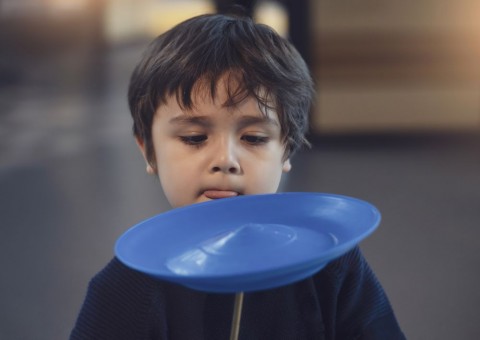Montessori and the Myth of Low Student Teacher Ratios

As parents we have to judge what makes a good educational program for our children. We ask our friends, we look at the school – is it clean and orderly and bright? We look at the children – do they seem happy? We observe the teacher – are they engaged and interested in the children? These are things that we can judge. And then we remember that we’ve heard that a low student–teacher ratio is important for a good educational approach and outcome. (It must be true because all of the governmental agencies are always trying to lower the ratios.)
Ratios aren’t critical
Low ratios are a myth as far as Montessori education is concerned. Traditionally, a low student–teacher ratio is desired if you are trying to make everyone do the same thing at the same time. (It is a lot like herding cats – the less you have, the easier it might be to perform.) Ratios aren’t critical in Montessori for three reasons.
- In Montessori education you do not teach classes (numbers) you teach children (individuals.)
- The goal in the classroom is not just to teach the material but to facilitate the child’s ability to learn on their own – which in effect makes the learning one on one.
- And because of the nature of the classroom where children are encouraged to help each other – the five year olds teach the four year olds and the four year olds teach the three year olds – you literally have more teachers than students.
Parents wonder still – “If there were fewer students wouldn’t my child get more attention from the teacher?” Interestingly, it is not just the amount of time your child needs but the amount of focused time (time spent directly on your child’s priorities and needs) that effectively contributes to their learning.
A Montessori teacher can be compared to a juggler who spins plates on a stick. They will begin spinning the first plate, then the second, third and fourth. They might go back and give the first plate a spin before spinning the fifth and sixth. They might then spin the second plate – and that first plate might need another spin before they get the seventh plate rotating. Likewise, the teacher notes each of their students and what it takes to power up the learning gyroscope in each child – so the child can keep the learning plates spinning on their own. A low ratio is good if you are driving the learning – not as consequential if you are leading it.
Now, because the teacher doesn’t spend all of their time driving the learning, they have time to study each child: to study their needs, skills, aptitudes and personality. All the ratios in the world are meaningless – unless you know your student.

The child is free to develop initiative
Ironically, there are many advantages of not having a low student–teacher ratio in the classroom.
- Children aren’t smothered by attention. They are given the opportunity to breathe and explore. The teacher does not feel compelled to guide and fill their every moment.
- Because the teacher does not dominate the society, the classroom becomes a community of interaction and learning. Cooperation is a virtue (instead of “Go back to your seat and mind your own business.”)
- With the adult not hovering and micromanaging, the child is free to develop initiative. This initiative creates the fantastic learning that comes out of a Montessori classroom (which a teacher would be hard pressed to produce in a traditional setting.)
- The child develops a personal sense of responsibility over the learning they have initiated.
- The child develops the ability to make meaningful choices – instead of just following directions.
- The power to choose wisely is a growing marker of maturity.
- Real choice making needs the opportunity to make mistakes, to correct them, to recover from them and to learn from them. (That is hard to do when someone is hurrying you along to get to the next lesson.)
- All of this allows the student to build confidence in themself. When the student assumes responsibility for the learning they begin to build confidence in their ability to navigate in the world as it is being opened to them through the classroom, the classroom community and the world of knowledge.
Montessori teachers have to train themselves in the art of not interfering with the internal learning process of the student. They have to train themselves to observe the child, to know how the child learns and how to allow the child to learn.
Ultimately, they have to learn how to help the child learn for themselves– which is always one on one.
by Edward Fidellow, www.crossmountainmedia.com